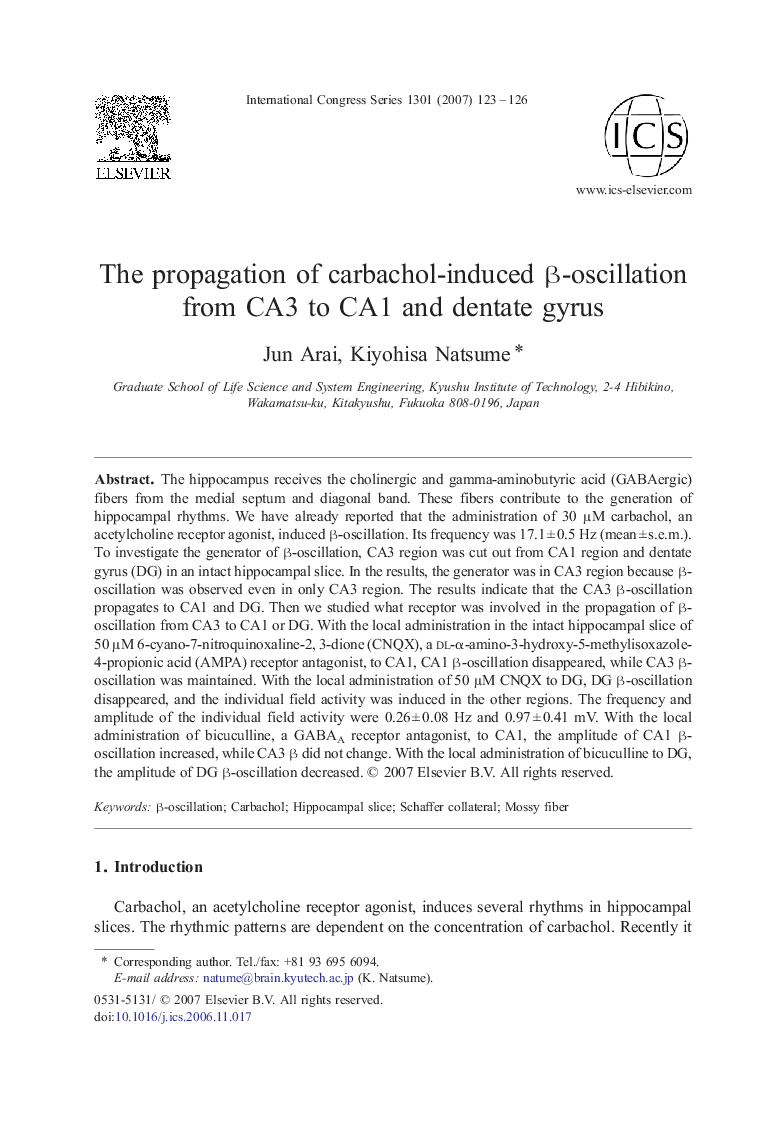| Article ID | Journal | Published Year | Pages | File Type |
|---|---|---|---|---|
| 2576497 | International Congress Series | 2007 | 4 Pages |
The hippocampus receives the cholinergic and gamma-aminobutyric acid (GABAergic) fibers from the medial septum and diagonal band. These fibers contribute to the generation of hippocampal rhythms. We have already reported that the administration of 30 μM carbachol, an acetylcholine receptor agonist, induced β-oscillation. Its frequency was 17.1 ± 0.5 Hz (mean ± s.e.m.). To investigate the generator of β-oscillation, CA3 region was cut out from CA1 region and dentate gyrus (DG) in an intact hippocampal slice. In the results, the generator was in CA3 region because β-oscillation was observed even in only CA3 region. The results indicate that the CA3 β-oscillation propagates to CA1 and DG. Then we studied what receptor was involved in the propagation of β-oscillation from CA3 to CA1 or DG. With the local administration in the intact hippocampal slice of 50 μM 6-cyano-7-nitroquinoxaline-2, 3-dione (CNQX), a dl-α-amino-3-hydroxy-5-methylisoxazole-4-propionic acid (AMPA) receptor antagonist, to CA1, CA1 β-oscillation disappeared, while CA3 β-oscillation was maintained. With the local administration of 50 μM CNQX to DG, DG β-oscillation disappeared, and the individual field activity was induced in the other regions. The frequency and amplitude of the individual field activity were 0.26 ± 0.08 Hz and 0.97 ± 0.41 mV. With the local administration of bicuculline, a GABAA receptor antagonist, to CA1, the amplitude of CA1 β-oscillation increased, while CA3 β did not change. With the local administration of bicuculline to DG, the amplitude of DG β-oscillation decreased.
